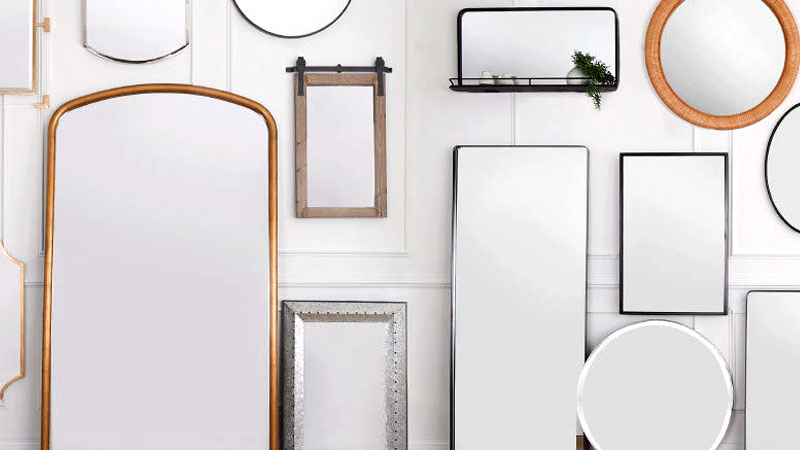Mirrors have fascinated humans from the very beginning. The idea that you can see yourself feels almost magical. But then humanity began to see even greater potential in mirrors, as well as finding them to be a source of fear.
For example:
- In many cultures it’s believed that a mirror placed on an outside wall can act as a portal, bringing bad luck and misfortune upon the home.
- Horror stories abound in which the mirror may reveal your doppelgänger, a demonic double that wishes to replace you.
- And a broken mirror supposedly brings seven years of bad luck.
- On the flip side, mirrors can be used to redirect light and even focus light or other energy into lasers.
Today, there are many different types of mirrors out there, categorized by their function and shape. How many of these mirrors do you use every day?
See Also: 12 Types of Watch Bezels
Types of Mirrors
1. Circular Mirror
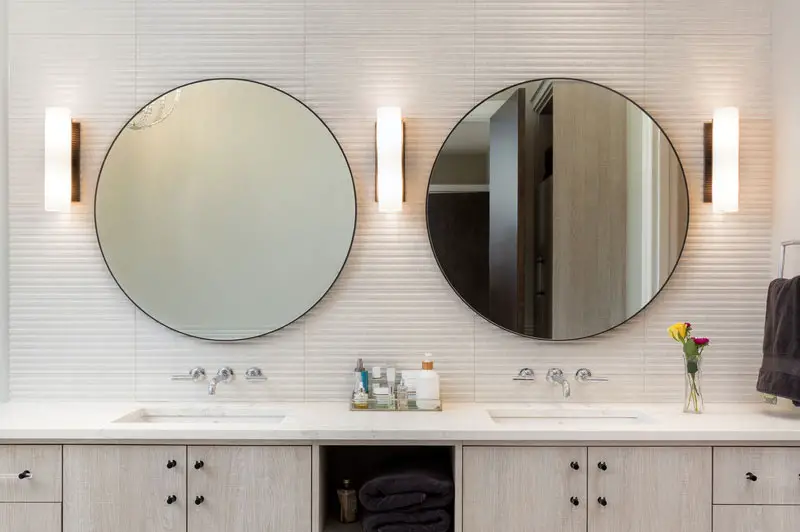
You may hear this term used a lot, and it can refer to any mirror that’s round. However, it usually refers to convex and concave mirrors.
2. Concave Mirror
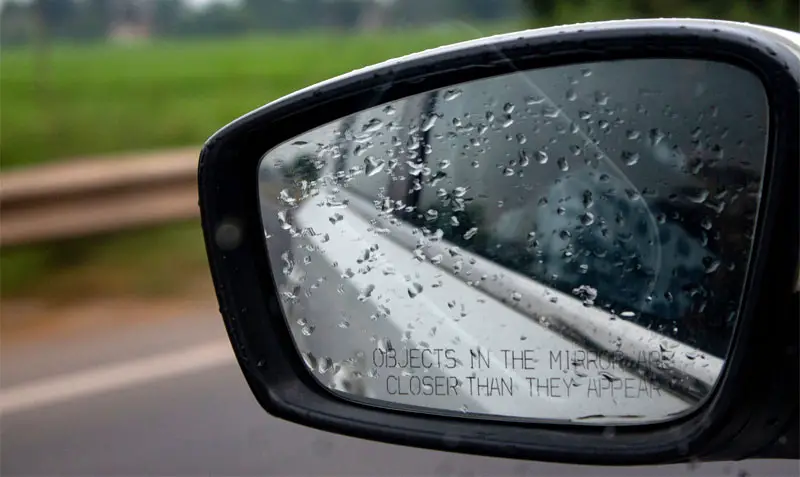
Concave mirrors are usually spherical and have a slight depression in the middle. This depression focuses light, making objects appear larger. For this reason, they’re often used in makeup compacts, dental tools, and other places where magnification is important.
Meanwhile, the ability to focus light also makes these mirrors useful in amplifying light sources. For example, the backing for your car’s headlights is a concave mirror. They are also used in lasers to focus light into a tight beam of high intensity.
One interesting aspect of concave mirrors is the way our brains process the image. From far away, your reflection may seem upside down. But as you walk closer to the mirror, the image will flip right-side up and become larger.
3. Convex Mirror
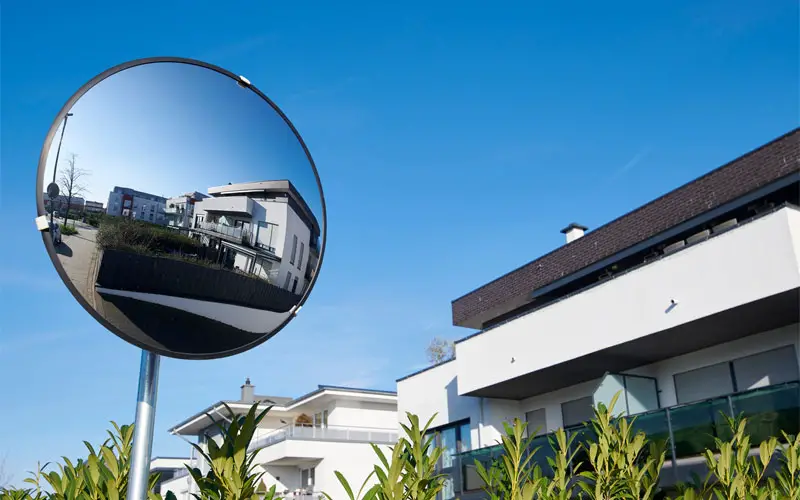
Convex mirrors are usually spherical in shape, and the middle bulges outwards. This can distort the image to make it appear smaller in the middle. However, convex mirrors have many valuable functions in safety and security.
You will often find convex mirrors in the upper corner of tunnels or narrow roads where it allows you to see if someone is approaching from the other side of a bend. Store security uses convex mirrors in corners as well to allow them to watch multiple aisles at once.
Oddly enough, while the rear-view mirror in a vehicle is concave, the side-view mirrors are generally convex. It’s worth noting that many newer larger vehicles (especially semi trucks, construction vehicles, tow trucks, etc.) are slowly doing away with mirrors and replacing them with video cameras.
4. Funhouse Mirror
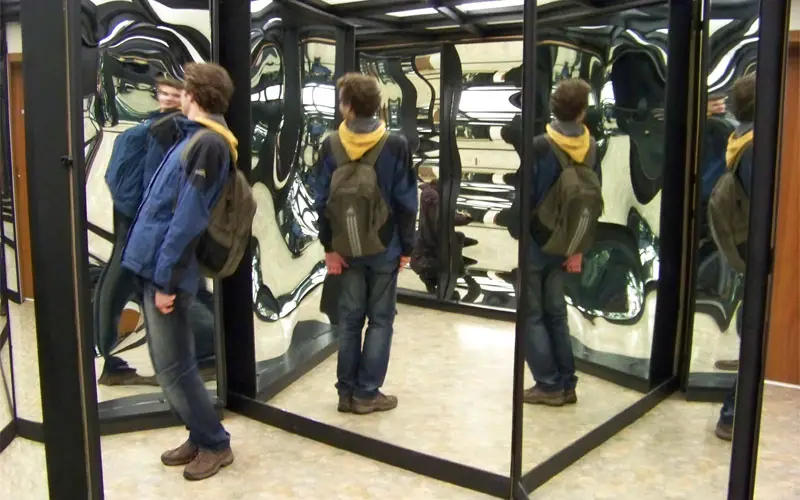
The infamous funhouse mirror is a very unique design that lends to its creepy effects. Instead of being a plane, concave, or convex mirror, it actually combines all three. Thus, when you look at a funhouse mirror from the side, you’ll notice that it isn’t flat, but instead has a wavy front surface.
It’s this mix of convex and concave curvature (sometimes with a bit of flat plane as well) that causes your body to shift from fat to thin, tall to short as you move in front of it.
While primarily used for the sake of fun, the funhouse mirror has become a valuable illustrative tool in psychology to describe how many eating disorders cause a distortion in self-perception.
5. Magic Mirror
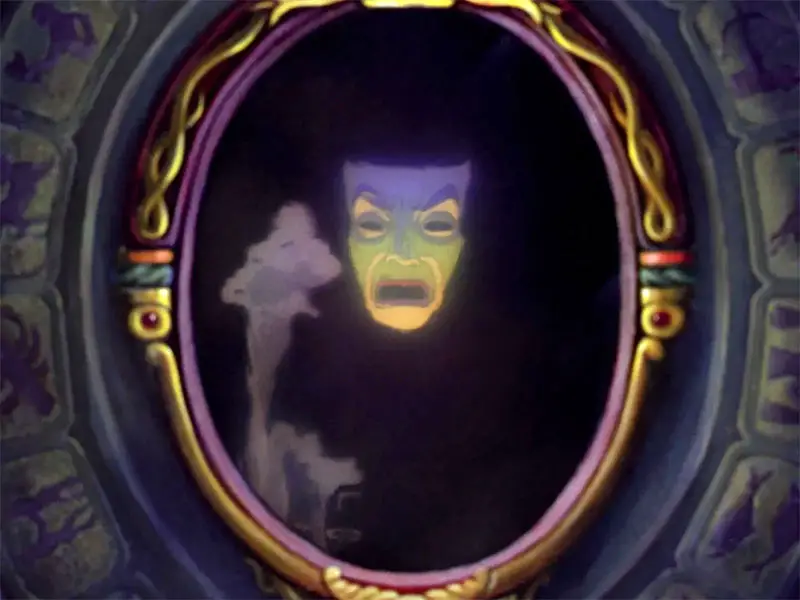
There are technically a few different kinds of magic mirror. The first kind is popular in fantasy novels. In this type of magic mirror, an entirety exists inside of the mirror and communicates to the user through it.
Perhaps the most famous example of this is the mirror from Snow White, in which the evil entity in the mirror preys on the queen’s vanity, causing her to attempt to kill Snow White. Of course, in some modern adaptations, it is the queen who is evil and the entity in the mirror is enslaved by the queen.
The second type of magic mirror is used by real life illusionists. The popular phrases “It’s all done with mirrors” or “It’s all just smoke and mirrors” are direct references to how illusionists use mirrors in their performances. A famous example is a variation of a trick where the illusionist cuts a woman in half. Of course, there are many ways to perform this trick, often without the use of mirrors.
A third type of magic mirror is the scrying mirror, but we shall discuss that one on its own.
Read Also: 11 Types of Mages in Fantasy and Science Fiction
6. Metal Mirror
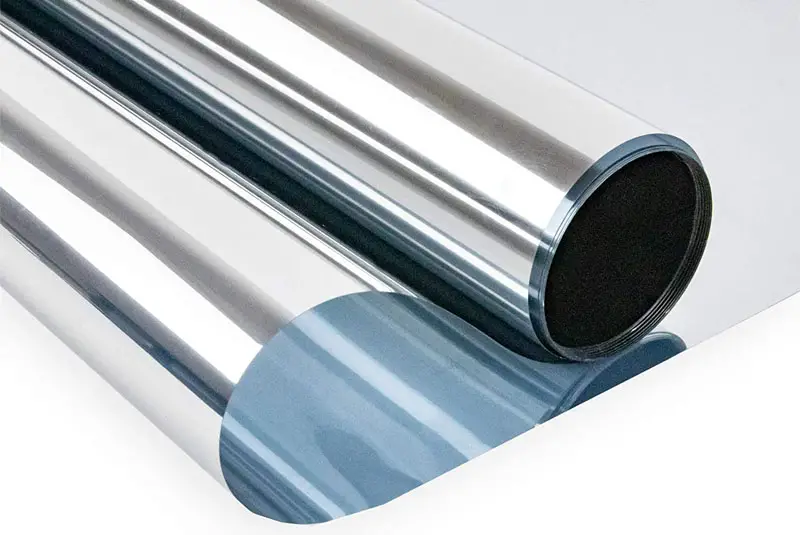
Not all mirrors are made of glass. In fact, metal is perhaps the second most common type of mirror material after glass itself. There are a few types of metal mirror, all of which exist primarily for safety reasons.
When most people think of a metal mirror, they tend to think of a highly polished sheet of thick metal. This type of metal mirror is commonly used in prisons, although they are also popular in a variety of commercial settings, such as bars or bus station restrooms where there’s a high risk of someone breaking a glass mirror.
Metal mirrors can become scratched or scuffed, affecting their ability to reflect. However, they’re a lot more affordable and can last a long time.
The second type is a foil mirror. Foil mirrors use thin metal foil to create a mirrored surface. This type of metal mirror is very common on toys, where they usually have an adhesive backing and are applied like decals.
Some examples of foil mirrors can be found on infant and toddler toys, as well as in doll houses and motorized, rideable toy vehicles.
7. Non-Reversing Mirror
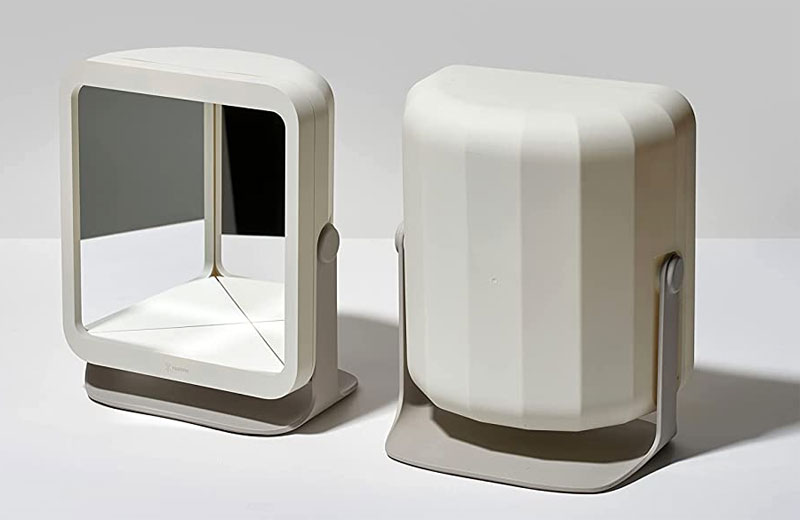
These mirrors are really something special. Most mirrors flip the image horizontally, so when you wave your right hand, it looks like the person staring back is waving their left.
But non-reversing mirrors do something very different – when you wave your right hand, the person staring back waves their right hand. It’s fun to purchase one of these mirrors and place them in a bathroom or other place visitors might use them just to see their reaction.
8. Plane Mirror
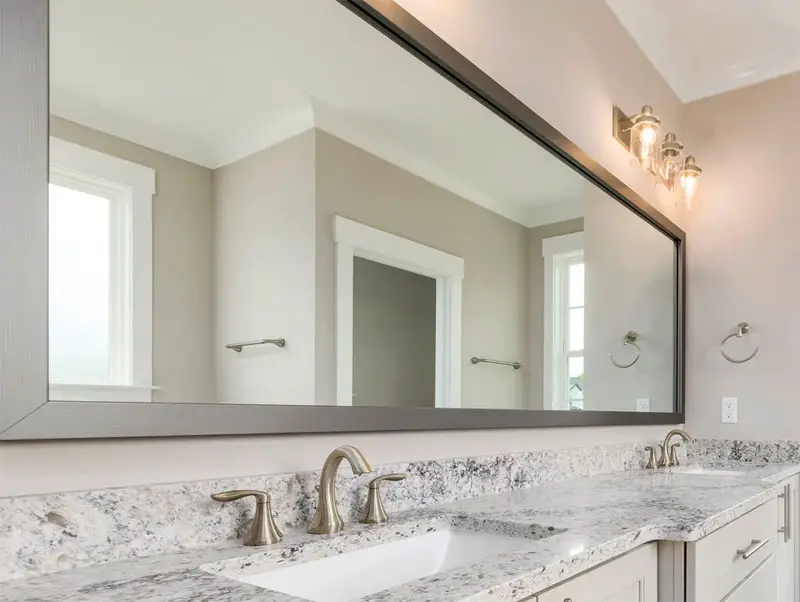
This is the kind of mirror you’re likely most familiar with. It’s a flat piece of glass that’s coated on one side in a metal alloy. The metal ensures that all light is reflected back at the viewer and none is able to pass through. As a result, plane mirrors tend to provide a crystal clear image.
They can be found in almost any setting, from medicine cabinets in your bathroom, to the bedroom, changing rooms at clothing stores, and restrooms in commercial businesses.
Because the glass has no curvature, the resulting image is a 1:1 scale representation, although slight imperfections can sometimes make the reflection almost imperceptibly larger or smaller. However, plane mirrors do have one drawback, which is known for causing confusion to the viewer – the reflection is laterally reversed.
This means that you can put your right hand up and it will appear as though the person looking back at you in the mirror is putting their left hand up.
See Also: 13 Different Types of Urinals
9. Rear-View Mirror
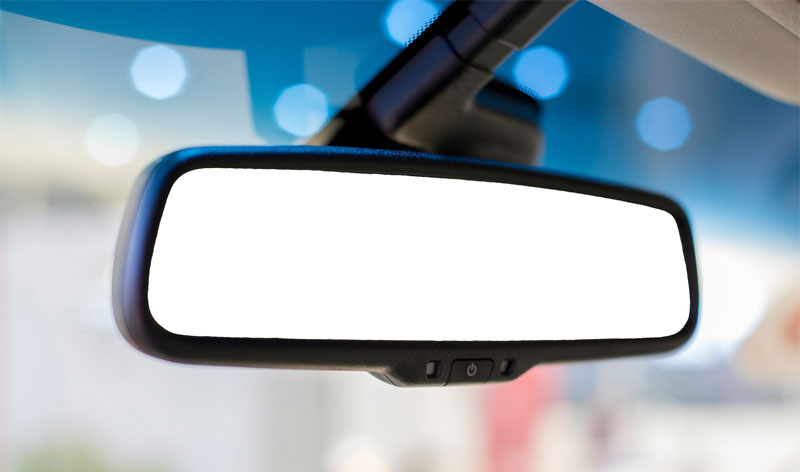
Found on all sorts of vehicles, the rear-view mirror is an essential piece of safety equipment. However, as Meatloaf pointed out in one of his most famous songs, a rear-view mirror is actually concave, making objects appear closer.
While sometimes a little disorienting for new drivers, this distortion is intentional to make it easier to see small objects such as children.
Many vehicles now have a computer-controlled camera to aid in checking for objects or people behind the vehicle, but it is unlikely that this innovation will completely replace the need for a concave mirror shape any time soon.
10. Scrying Mirror
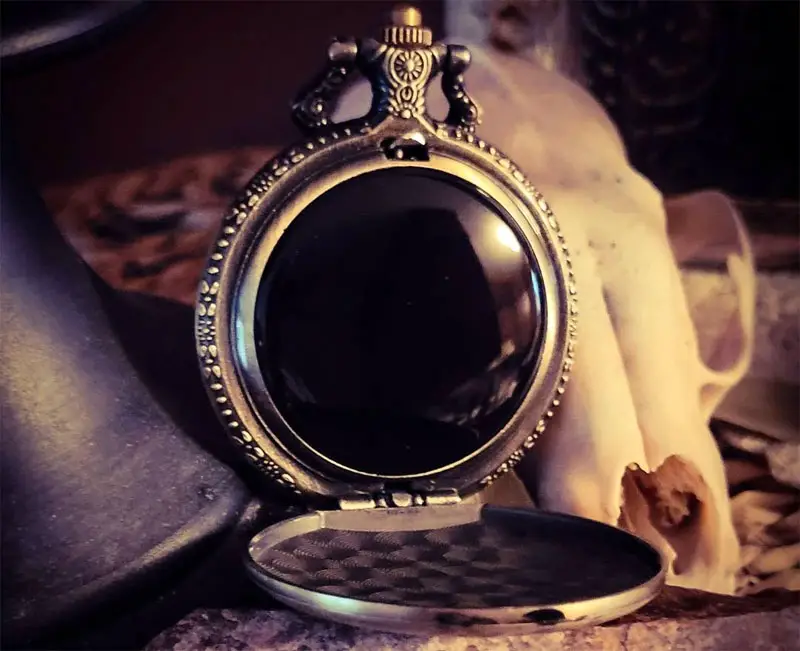
Scrying mirrors are a category all of their own when it comes to magic mirrors. These are reflective surfaces into which a scryer stares, hoping to gain a vision of the future, past, or events currently happening elsewhere in the world.
There are different types of scrying mirror, based largely upon the elements. For example, some type of bowl of water serves as a scrying mirror for those with affinity for water, while a glass mirror is used for air scrying.
Of course, the most famous kind of scrying mirror is the crystal ball, which (contrary to the name) is most often made of glass.
11. Two-Way Mirror
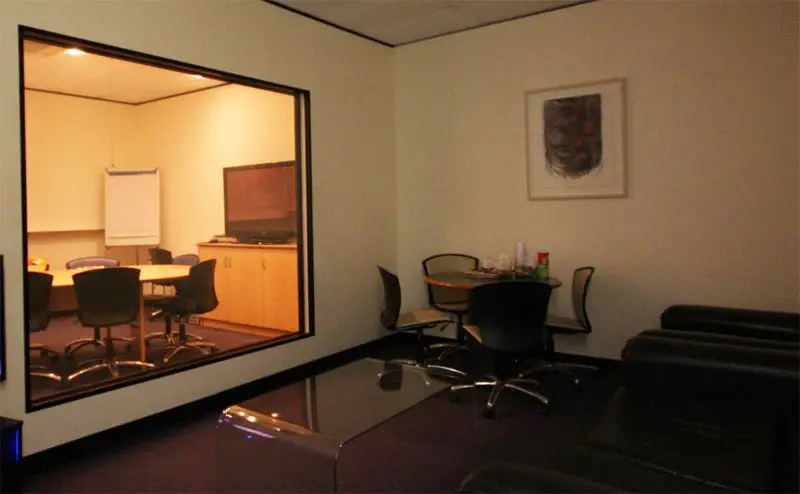
Two-way mirrors are somewhat special. Unlike most mirrors, they don’t use a thick metal coating to prevent all light from passing. Instead, the coating allows some light to pass through.
To create the infamous effect, the mirror is placed between two rooms. One room is brightly lit, while the other is darkened. As a result, those in the dark room can see through to the other side, but those in the bright room can’t see anything in the darkened room.
Two-way mirrors are most often used for observing an interrogation or interview, allowing officers or medical personnel to take notes and ensure nobody in the brighter room is in danger. However, they have sometimes been used for more sinister purposes.
Because these mirrors have a glass surface on both sides, they will look like a normal window when the lights are on in both rooms.

